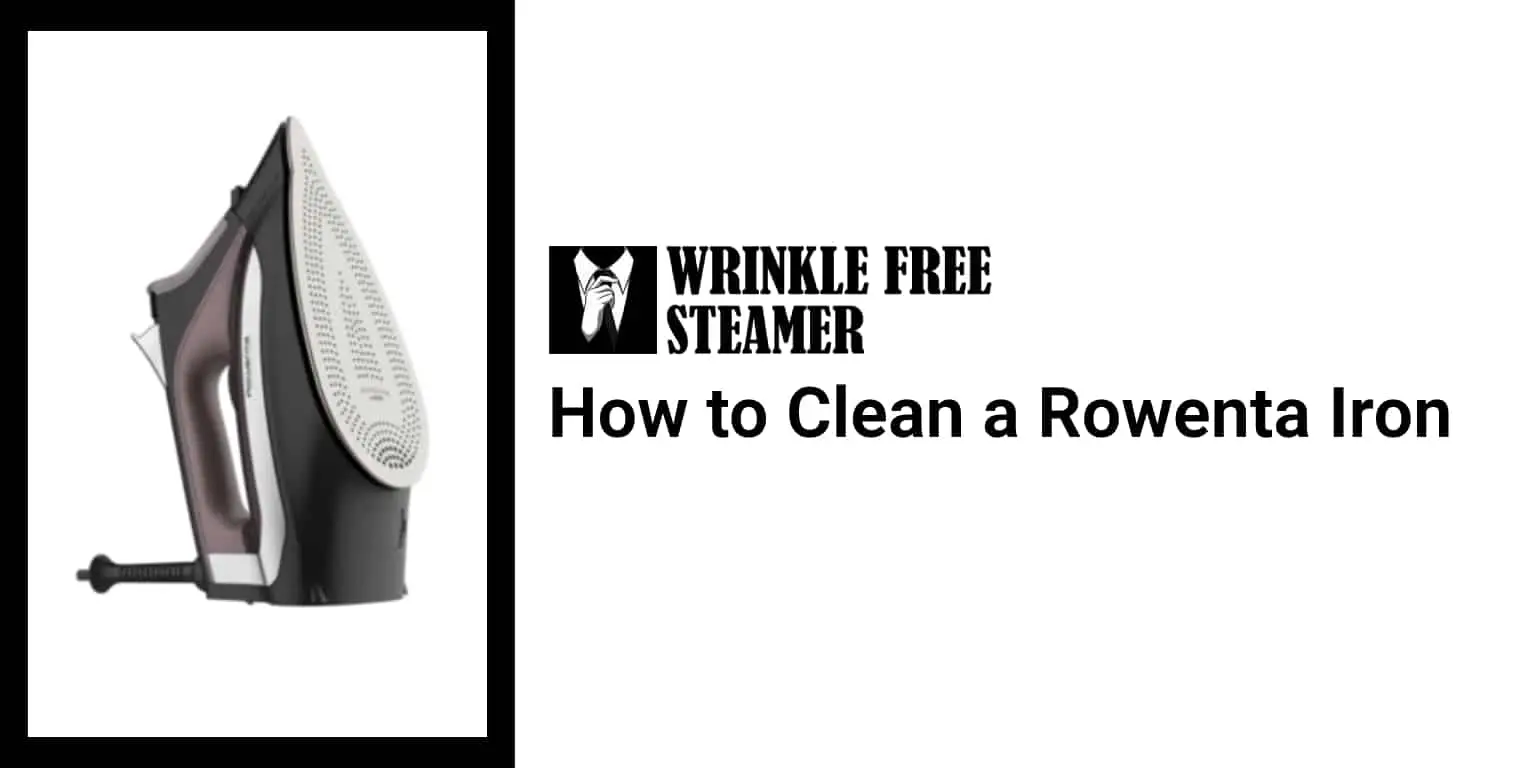As an Amazon Associate we earn from qualifying purchases.
Rowenta irons are a well-known and highly rated brand and, if you have one, then you have a great iron. While learning how to use a Rowenta steamer can be simple, cleaning it can be a difficult task if you are unsure what you are doing. We will walk you through the steps you need to know for how to clean a rowenta iron.
How to Clean a Rowenta Iron
When your iron is not gliding easily over clothes anymore or if you are noticing brown streaks in your ironing, then your iron is overdue for a cleaning. Learning how to clean a Rowenta iron is fairly easy when you know what cleaners and steps you can use.
Our first strategy is using baking soda. Chances are, you already have this versatile product lying around your house.
Cleaning a Rowenta Iron with Baking Soda
Baking soda is a great solution to use for cleaning. This is because baking soda is a mildly abrasive cleaner that can be used to scrub off mineral deposits and scaling.
- Make sure your iron is turned off, unplugged, and cool.
- Mix 1/2 cup of baking soda with a few tablespoons of water until it makes a paste.
- Adjust the ratio as needed to make a consistent but thick paste. You don’t want it to be too watery.
- Spread the baking soda on the iron’s plate.
- You can choose to spread it to a single area or coat the entire plate.
- Let the paste sit for a few moments.
- Use a clean wet cloth to wipe off the paste.
- Make sure you wring out the cloth well before you wipe.
You don’t want to oversaturate the iron. You just need to have enough to wipe away the baking soda.
If you find this method is not working for you, try using toothpaste to clean your iron. It can help get rid of stubborn grime.

To clean the tiny steam-holes, use a cotton swab dipped in distilled water or vinegar. It is a good idea to use as many as needed. When the head becomes dirty, switch sides or use another one. This way you aren’t cleaning the grime from one hole and then rubbing the grime into the next one.
Rowenta makes top of the line steam irons, and baking soda should handle the majority of your poroblems. However, if you’re still having challenges, you might want to try vinegar.
Cleaning a Rowenta Iron with Vinegar
Vinegar is a highly popular cleaning agent that has many uses. It is great for descaling water reservoirs due to its high acidity. Vinegar can break down and eat through mineral buildup.
You don’t want to add straight vinegar to the iron. It will be overly acidic. Nor do you want to add addition cleaning products into the reservoir tank. The perfect vinegar-based solution to use is this recipe.
This basic mixture incorporates the hard-working vinegar while allowing additional water to lower the acidity content. You can mix up a small bottle to use whenever you need to clean your steam iron.
Cleaning your Rowenta Iron Reservoir
Knowing how to clean a Rowenta iron’s inside reservoir and steam traveling tubes is vital to keeping your iron working properly. The water reservoir and the inner tubes are susceptible to hard water and mineral buildup. When you are ready to clean your iron, this step-by-step process will break down what you need to do.
- Unplug it and dump out the water reservoir.
- Fill the iron with the vinegar solution you made and plug it in.
- Turn on the steamer function and allow the steam to come out.
- To help get out the gunk, use an old cloth such as a kitchen or bath towel to iron.
- Any buildup will be pushed out and may discolor or leave streaks on your towel.
- Continue to iron the towel until there are no more streaks left.
- If there is leftover vinegar solution in the tank, let it sit while the iron cools down.
- Pour out the mixture.
- Fill the Iron with only water and iron another towel.
- If the iron is running normal and not leaving any streaks, you are done.
- Unplug your steamer and let the reservoir air dry.
If you notice your iron is still not emitting the maximum amount of steam that it is able to, you can repeat the vinegar mixture two or three more times. If you haven’t cleaned your steamer in a long time, you may have a large amount of buildup.
Cleaning Your Rowenta Iron Plates
You can also use vinegar to clean your iron’s plates. Using vinegar on the plate will help remove oily buildup or substances left on your iron.
To clean your iron, dip a cloth in undiluted white vinegar and wipe the soleplate. You can wipe with pressure. No need to be gentle on the sole plate since vinegar is not abrasive.
When you have wiped it clean, finish by running a clean cloth dipped in water over it. Allow the iron plate to dry completely before you put it away to store.
If you need a more abrasive cleaner, you can mix a salt and vinegar cleaner for the plates.
How to Self Clean a Rowenta Iron
Using the self-clean function on a Rowenta iron is easy and effective for cleaning your iron. While the steps can vary from each model, there are a few things to keep in mind when you are learning how to clean a Rowenta iron.
An iron that has a self-clean function built into it also has a filtering anti-scale cartridge. For irons with this cartridge built in, avoid any descaling agents such as vinegar.
For the self-cleaning function, only add water to the iron’s reservoir. When turned onto the self-clean function, the iron will force water through the chambers to flush out any buildup or scaling.
It is a good idea to self clean your iron every two weeks to avoid any large amounts of buildup. If you use your Rowenta iron frequently, then you may need to do it every week.

Conclusion
Knowing how to clean a Rowenta iron allows you to better take care of your appliance. If you make a good cleaning routine, you can extend the life of your iron and ensure that it is running at its peak condition every time you use it.

